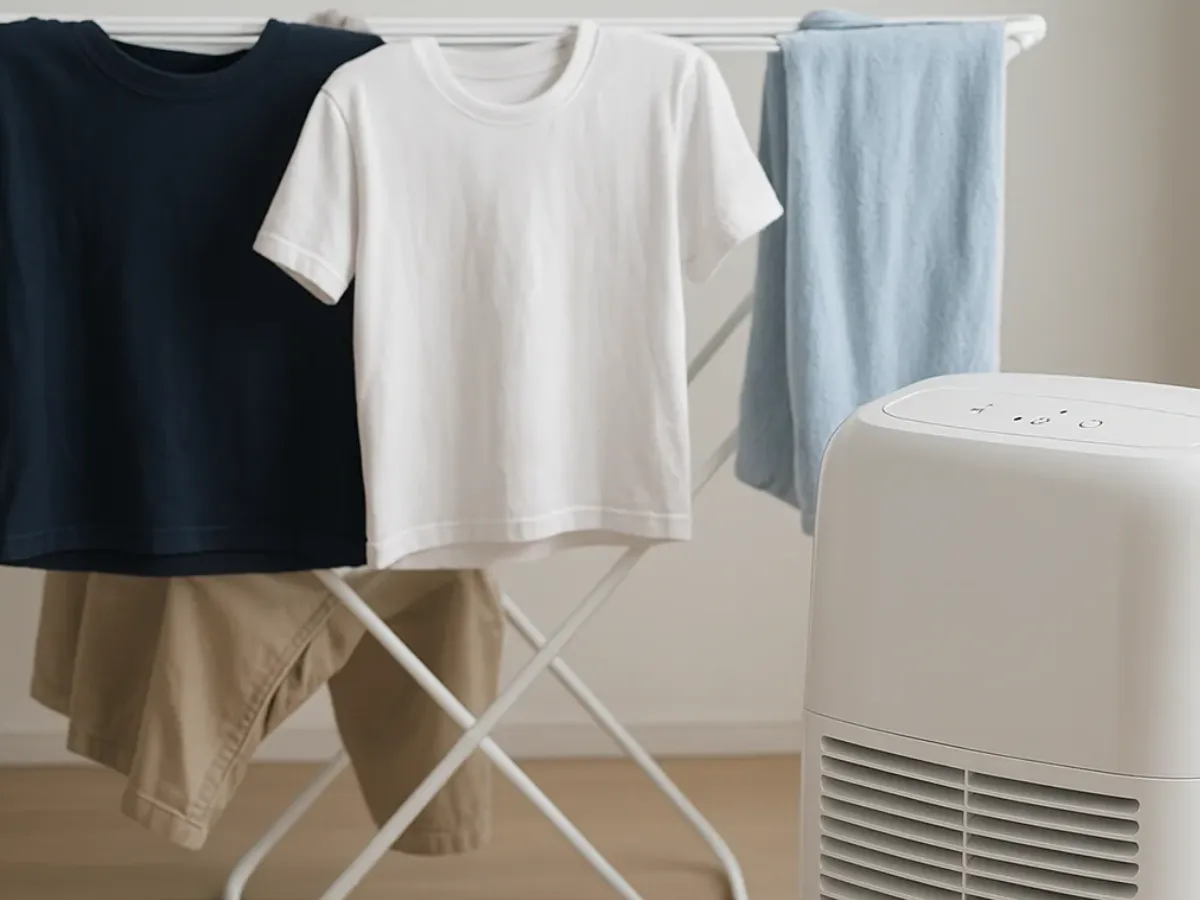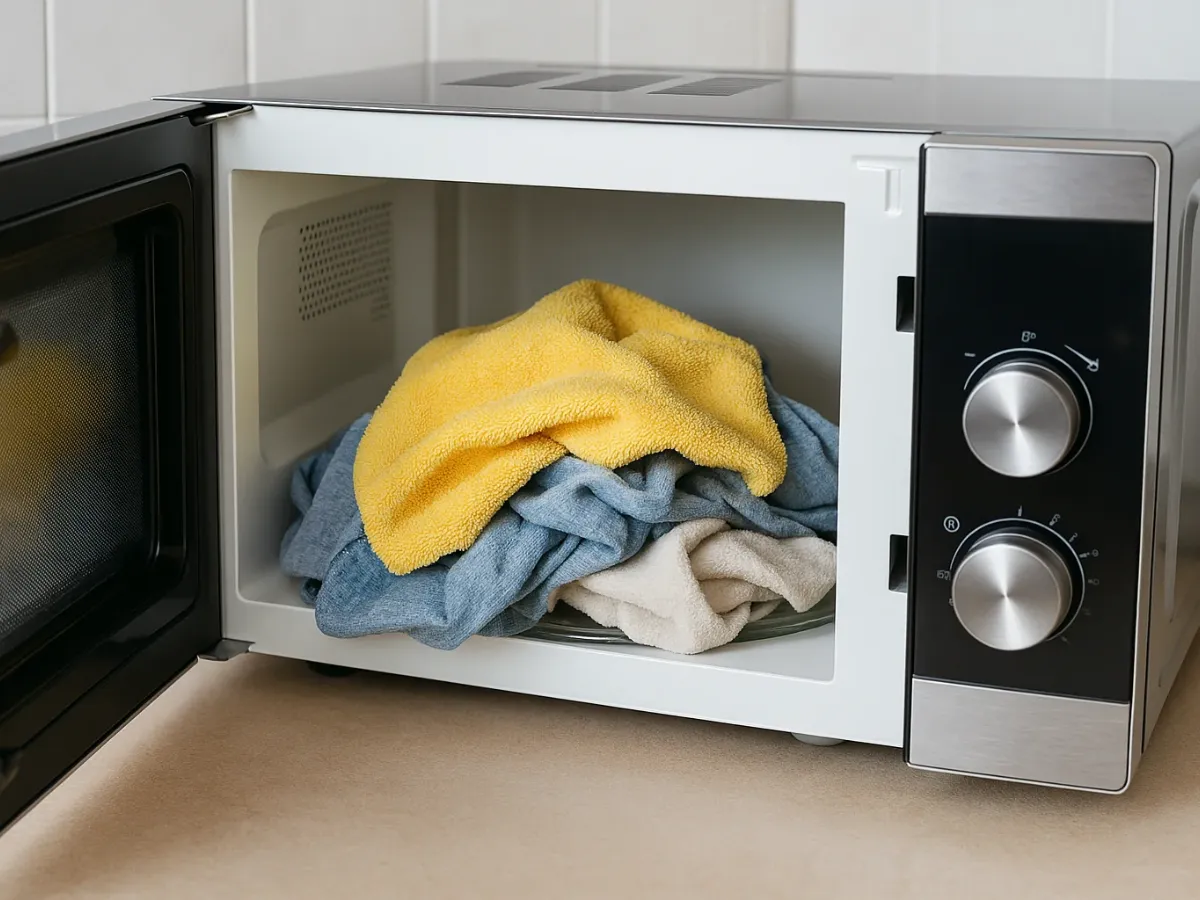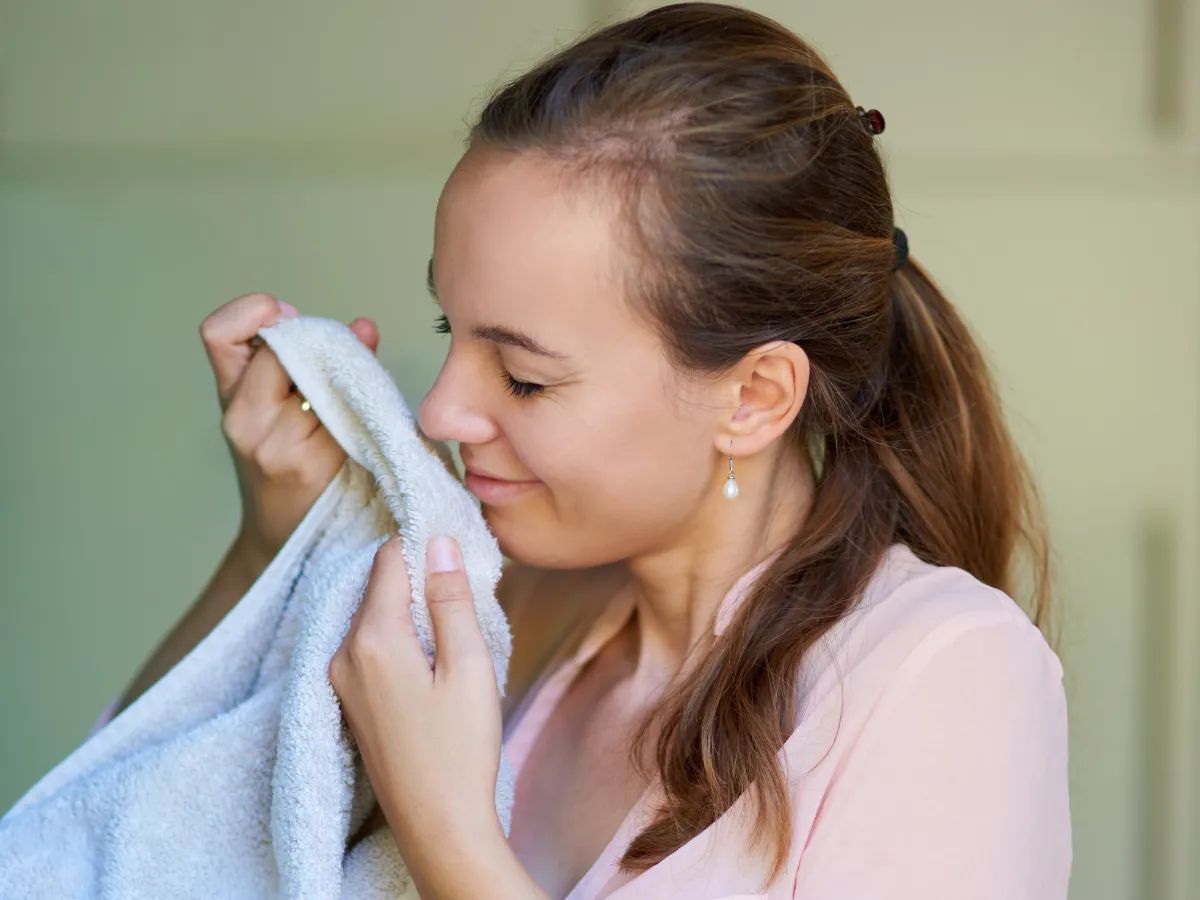Drying Clothes with a Dehumidifier: The Smart Indoor Solution (Complete Guide)

Winter arrives, rainy days drag on, or maybe you just don't have outdoor space for hanging laundry. Drying clothes indoors becomes the only option, but it often brings problems: it takes forever to dry, the house fills with dampness, garments end up smelling musty... What a hassle! Fortunately, there's an increasingly popular and efficient solution: drying clothes with a dehumidifier.
But how does it work exactly? Is it really effective? Does it consume a lot of energy? How do you use it correctly for the best results? If you're looking for an alternative to a traditional tumble dryer or simply want to optimize indoor drying, this complete guide will explain everything you need to know about using a dehumidifier as your secret laundry ally.
What is a Dehumidifier and How Does it Help Dry Clothes?
A dehumidifier is an appliance designed to extract excess moisture from the air in a room. It works by drawing in humid air, passing it over a cooling system (cold coils) where water vapor condenses into liquid water (which is collected in a tank or drained), and finally expelling the drier air back into the room.
And how does this help dry clothes? Wet clothes release moisture into the air through evaporation. If the room's air is already saturated with moisture (common in winter, rainy days, or poorly ventilated homes), clothes take a very long time to dry because the air can't absorb any more water. The dehumidifier breaks this cycle:
- Reduces Ambient Humidity: By lowering the relative humidity in the room, it creates a much more favorable environment for evaporation.
- Accelerates Evaporation: Drier air "pulls" moisture from wet clothes much faster.
- Prevents Associated Problems: By drying clothes faster and reducing overall humidity, it prevents the development of musty smells on garments and the proliferation of mold on both clothes and room walls.
Basically, the dehumidifier creates the ideal conditions for clothes to dry naturally, but much faster and without the drawbacks of excessive humidity.
Steps to Dry Clothes Correctly with a Dehumidifier
Using it is simple, but following these steps will optimize the process:
- Prepare the Clothes: Take the clothes out of the washing machine. Make sure they have been well spun (a good spin cycle removes a lot of water and speeds up drying). Shake each garment well to remove wrinkles and facilitate air circulation.
- Choose the Right Room: Select a small to medium-sized room (a bathroom, laundry room, small bedroom...). The smaller the volume of air to treat, the faster and more efficient the dehumidifier will be.
- Hang the Clothes: Hang the clothes on a drying rack (winged, tower, ceiling-mounted...). Leave space between garments; don't crowd them. Good air circulation between them is essential for even drying.
- Close Doors and Windows: Very important! Close the room door and windows to "isolate" the environment. You want the dehumidifier to focus on the moisture from the clothes and the air in that room, not try to dry the whole house or the damp air coming in from outside.
- Position the Dehumidifier: Place the appliance in the same room, near the drying rack but not touching it or directly underneath. Ensure the dehumidifier's air intake and outlet grilles are not blocked and that it has space around it to operate correctly. Do not direct the stream of dry air directly onto the wet clothes (this can dry some parts faster than others). The goal is to treat the general air in the room.
- Turn On and Configure: Plug in the dehumidifier.
- Laundry Mode: Many modern models have this specific function. Activate it. It usually sets the fan and dehumidification to maximum power continuously.
- No Specific Mode: If it doesn't have a laundry mode, select the lowest possible humidity level (e.g., 30-40%) or set it to continuous mode (if available) and adjust the fan speed to maximum.
- Empty the Tank: Wet clothes release a lot of water. Keep an eye on the dehumidifier's water tank, as it will likely fill up quickly (depending on its capacity and the amount of laundry). Empty it when full so the appliance continues running. Some models allow connecting a hose for continuous drainage if you have a drain nearby.
- Drying Time: Let the appliance work. The required time will vary greatly (see next section).
Advantages of Using a Dehumidifier to Dry Clothes
Compared to other options, drying with a dehumidifier offers interesting benefits:
- Energy Efficiency (vs. Condenser Dryer): Consumes significantly less electricity than a traditional electric condenser dryer. Although a heat pump dryer is very efficient, the dehumidifier remains a low-consumption option.
- Gentle on Clothes: By not applying direct, intense heat, it's much gentler on fabrics. Reduces the risk of shrinking, deformation, or fiber wear, making it ideal for delicates you wouldn't put in a tumble dryer.
- Improves Indoor Air Quality: Not only dries clothes but also reduces overall room humidity, helping prevent the growth of mold, dust mites, and musty odors in the home.
- Prevents Condensation: Unlike drying clothes near radiators, it doesn't release large amounts of water vapor into the air, avoiding condensation problems on windows and walls.
- Versatility: The dehumidifier can be used to control humidity at home year-round, not just for drying clothes.

Potential Drawbacks to Consider
- Drying Time: It's generally slower than an electric dryer. It can take from a few hours to over a day, depending on the factors.
- Space Required: Requires dedicating a room (preferably small) for drying while the appliance is running.
- Noise: Like any appliance with a compressor and fan, it generates some noise.
- Emptying the Tank: You need to monitor and empty the collected water if it doesn't have continuous drainage.
- Initial Cost of the Appliance: Although it saves energy long-term, it requires the initial purchase of the dehumidifier.
How Long Does it Take to Dry Clothes with a Dehumidifier? Key Factors
This is the big question, and the answer is: it depends. There's no fixed time, as many factors influence it:
- Dehumidifier Capacity: Measured in liters of water it can extract per day (e.g., 10L, 12L, 20L). A more powerful one will dry faster.
- Room Size: A small room concentrates the unit's action and speeds up drying.
- Initial Air and Clothing Humidity: If the environment is already very humid or the clothes are very wet (poor spin cycle), it will take longer.
- Amount of Laundry: More clothes release more moisture and require more time.
- Ambient Temperature: Dehumidifiers work best at moderate temperatures (between 15°C/59°F and 30°C/86°F). In very cold conditions, their performance decreases.
- Air Circulation: Good spacing between garments and, optionally, a fan, help.
As a general reference, a load of well-spun clothes in a small room with a medium-capacity dehumidifier might take between 4 and 8 hours to dry reasonably, but it could be longer if conditions aren't optimal.
Optimizing the Process: Additional Tips
- Use a Fan: Placing a small fan in the room (not pointing directly at the clothes, but moving the general air) can significantly improve circulation and speed up drying.
- Small, Warm Room (Moderately): If possible, choose the smallest and slightly warm room in the house.
- Effective Pre-Spin: Ensure the washing machine extracts the maximum possible water before hanging.
- Don't Crowd Clothes: Definitely leave space between items on the drying rack.
Also, if your clothes tend to easily pick up musty odors, ensure your washing machine is clean (especially the rubber seal and the drum) and consider disinfecting clothes properly to eliminate bacteria.
Frequently Asked Questions about Drying Clothes with a Dehumidifier
How to dry clothes with a dehumidifier?
Hang spun clothes in a small closed room. Place the dehumidifier nearby (not underneath) and turn it on (laundry mode or max). Empty the tank.
Is it good to use a dehumidifier to dry clothes?
Yes, it's energy-efficient, gentle on clothes, and prevents humidity/mold issues at home.
Where should I place a dehumidifier to dry clothes?
In the same closed room as the hanging clothes, near the rack but with space for air circulation.
How to dry clothes in a humid house?
Using a dehumidifier is the best option to speed up drying and avoid adding more moisture to the environment.
Drying clothes with a dehumidifier is a smart, economical, and gentle solution for your garments and your home, especially if you live in humid climates or lack outdoor space. By following these tips, you can say goodbye to perpetually damp clothes and musty smells, enjoying dry, fresh laundry without skyrocketing your electricity bill.
Need to Dry Clothes FAST? LaColada is the Answer!
While a dehumidifier is a great option, sometimes we need clothes dried NOW! If you're in a hurry or laundry is piling up, at LaColada Self-Service Laundry Ponferrada our powerful industrial dryers will dry your clothes in minutes. With large capacity and temperature control, they are the perfect solution when time is pressing. Combine the efficiency of washing at LaColada with the speed of our dryers!
Fast & Professional Drying at LaColada!
Sebastián R.
More than 10 years at the helm of Lacolada Lavanderia Autoserivico Ponferrada and repairing industrial and domestic machinery in my spare time. You won't find unverified theories from the internet here, just real solutions tested by someone who gets their hands dirty every day.
Other Drying Methods and Tips

Drying Clothes in the Microwave? Dangerous Myths and Realities
Discover why drying clothes in the microwave is NOT a good idea.

Removing Mold from Clothes Effectively and Safely
Eliminate mold stains and spores from your garments.

How to Remove Bad Smell from Towels (Even Washed Ones)
Tricks to eliminate musty odor and keep them fresh.